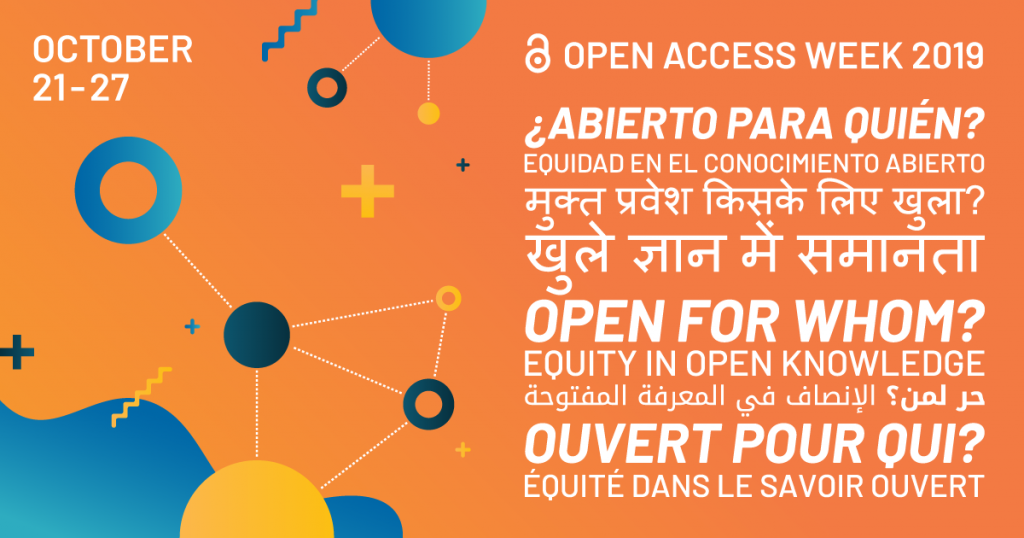
This week is Open Access Week, a yearly international celebration that aims to increase awareness about open access (scholarship that is free to read and reuse). Most academic work is locked up behind a paywall, available only to those who are affiliated with a college or university. Many Temple faculty members and graduate students choose to publish in open access journals in order to make their work more widely available to readers around the world.
The Libraries support open access publishing by Temple researchers through our Open Access Publishing Fund. When faculty and graduate students apply for the fund, we ask them why they have chosen to publish open access. Here are a few of the responses we have received this year:
“I prefer to publish open access because it increases accessibility and visibility. With an open access publication, I can be confident that my lab’s work will be accessible to everyone, free of charge and without having to wait for an embargo period.”
-David Smith, Assistant Professor, Psychology
“The open access nature of the journal is well-suited to our article, which addresses traffic calming via the use of non-asphalt materials for paving road surfaces, making streets safer for pedestrians, bicyclists, and motorized vehicles. Such paving materials are more common in the developing world, which was noted by one of the article reviewers. Publishing in an open access journal enhances access to the article by scholars in developing countries, where access to more conventional academic journals may be restricted due to cost or other barriers.”
-Jeremy Mennis, Professor, Environmental Studies
“This research is about the ecology of invasive species, which are an increasingly urgent problem that affect natural systems across the globe. It is important to make this research accessible to the scientific community and other non-academic stakeholders who are studying or affected by invasive species.”
-Amy Freestone, Associate Professor, Biology
“It is good to publish in an open-access journal because this format allows broader sharing of our studies. In addition, being digital, online article is published faster than the traditional journal article that takes over 4-6 months for printing an issue. Being open access, everyone worldwide can read our article without having to afford a costly subscription.”
-Marion Chan, Associate Professor, Lewis Katz School of Medicine
“The study aims to assess the relative importance of both environmental and socioeconomic neighborhood factors in the prediction of A. albopictus’ (one of the main transmitters of Zika virus) presence in Southeast Pennsylvania using MaxEnt (open source software) machine-learning algorithm. The study uses exclusively free available data and software to provide knowledge about the main drivers and current distribution of a vector species in South East Pennsylvania. This knowledge is relevant not only for academia but for others professionals working or interested on mosquito prevention planning such as public health officials. The free availability of this publication will provide access for these stakeholders to information that otherwise would be restricted for general use. We believe that publication in an open access journal will boost the impact of the article within and beyond academia.”
-Daniel Wiese, PhD student, Geography and Urban Studies
“The paper presents a school-based preventive dental program in the Republic of Armenia, as well as its results and recommendations to local stakeholders. In this middle-income country, most of the universities and public institutions do not have institutional access to mainstream academic journals. Publishing open access will allow readers in Armenia and in other low-income settings to get access to this paper and possibly replicate the intervention and its results.”
-Hamlet Gasoyan, PhD student, College of Public Health